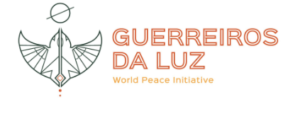
The Guerreiros da Luz Story
(in the words of Founder – Ahmad Simmons)
Upon my arrival in Rio de Janeiro, Brazil around 1998-1999, I immediately noticed the significant amount of homeless and abandoned children in the streets. As of April 2014, Rio de Janeiro is still included as one of the 25 cities in the world with the highest homeless populations in a study released by the United Nations Commission on Human Rights. Because of my own troubled and uprooted upbringing, I wanted to understand the reasons behind this unfortunate scenario so I could attempt to make a positive change.
Guerreiros da Luz (“Warriors of Light”) was born in 2007 when I moved to Salvador, Bahia. There I found poverty, drug trafficking and sex abuse to an even greater degree. I have worked with about 110 children in Salvador, Bahia-Brazil. I have worked with about 40 children on the island of Morro de Sao Paulo, Bahia-Brazil mentoring, teaching English, dance, and capoeira. We are now at a pivotal point. We now have a great team who all has the same goals in mind. We want to effect change in the town that we are in. We have been gifted a plot of land to build a cultural centre in Morro de São Paulo on the island of Tinharé where the local community want to be involved with our project. We are in the process of building our new centre there. We intend this centre to be place of exchange with the centres in Salvador de Bahia. This cultural center will be one of the headquarters of the international youth center. This will be where children from different cultures will be able to come together and interact without media influence.
The ultimate goal of the project is to help disenfranchised and abandoned children reach their fullest potential and become productive global citizens. The cultural centre is helping local children grow in a safe environment.
I believe that studies involving music, poetry, martial arts, and various academics provide the diversity, well-roundedness, and cognitive thinking that will be beneficial in helping these children gain a competitive chance in both Brazil’s economy and the international job market.
My inspiration and guidance came from The Jackie Robinson Center and Camp Friendship in Brooklyn, New York. These very successful organizations have helped many at-risk children, myself included, become productive, and healthy citizens.
My background in various martial arts, particularly Capoeira, has played an important role in developing a sense of confidence, focus, discipline, and cultural understanding. As a teacher and role model, these are the qualities that I aim to instill in the children that are a part of the Guerreiros program.
Over time, I noticed an ever increasing need all over the world for programs that help children, and the vision for the program developed on a global scale.
My goal is to create an international cultural exchange program where we can take groups of children from places around the world and link them to each other through organized cultural activities and general play. If children from different cultures are brought together at a young age and exposed to the beauty of diversity, they will be able to make decisions as they grow older that keep the rest of humanity in mind, thus developing a world family for a better future.
Homelessness & Education in Brazil






Mission:
Our mission is to help underprivileged children gain self-sufficiency and self-esteem.
We are targeting at risk youth between the ages of 6 and 17.
We will decrease violence in the streets and increase positive and clean communities through the teaching of martial arts, visual arts, music, dance, and academics.
About the Cultural Center




Ahmad has moved to Brazil permanently to follow a dream: to build a multi-generational Cultural Center to the village of Morro de São Paulo, Tinharé that will allow a brighter future for kids. Ahmad’s dream is to reciprocate the help and influences he received when he was a youth and needed guidance.
The center not only teaches English, Portuguese, Art, Meditation, and Yoga, but this center will instruct Capoeira, a Brazilian martial art developed by African slaves which offers these children not only a rich cultural tradition but a sense of empowerment and a strict moral code. The art itself involves dance, acrobatics, music, muscle toning, and self defence. Most importantly, like many martial arts, it teaches not only fighting techniques but self-control and the ability to walk away from violence.
The building of this cultural center has been run by Ahmad and other helpers from the local community on land donated by the villagers with the help of volunteers and no income.
The center that is envisaged is one where families come together in community projects and tourists mix with locals to break down boundaries of culture, wealth and religion.
